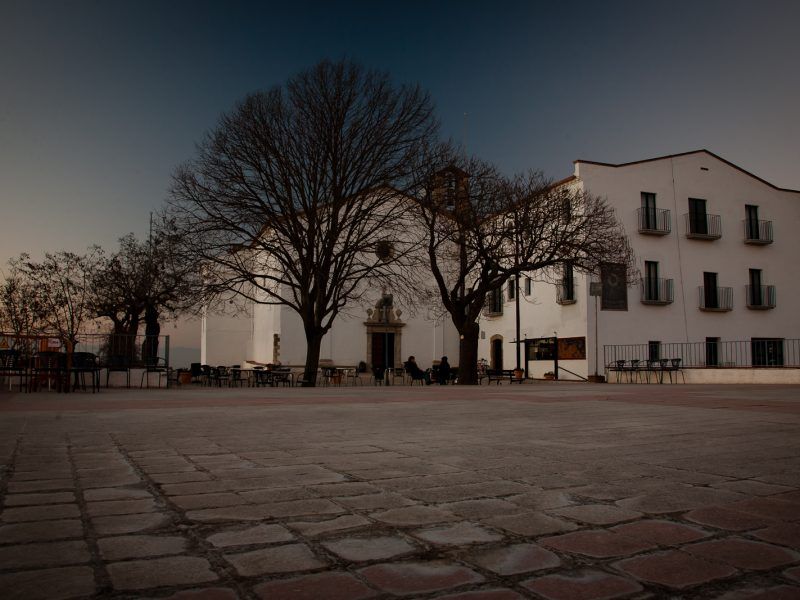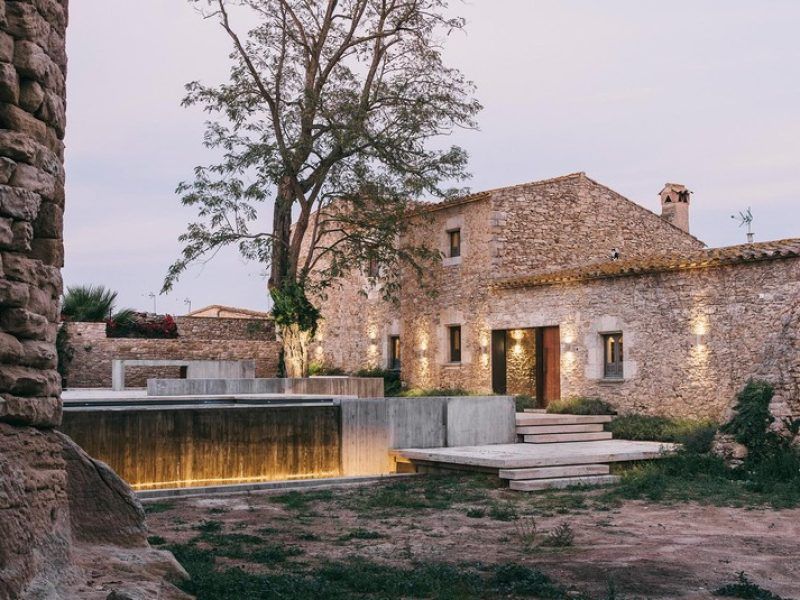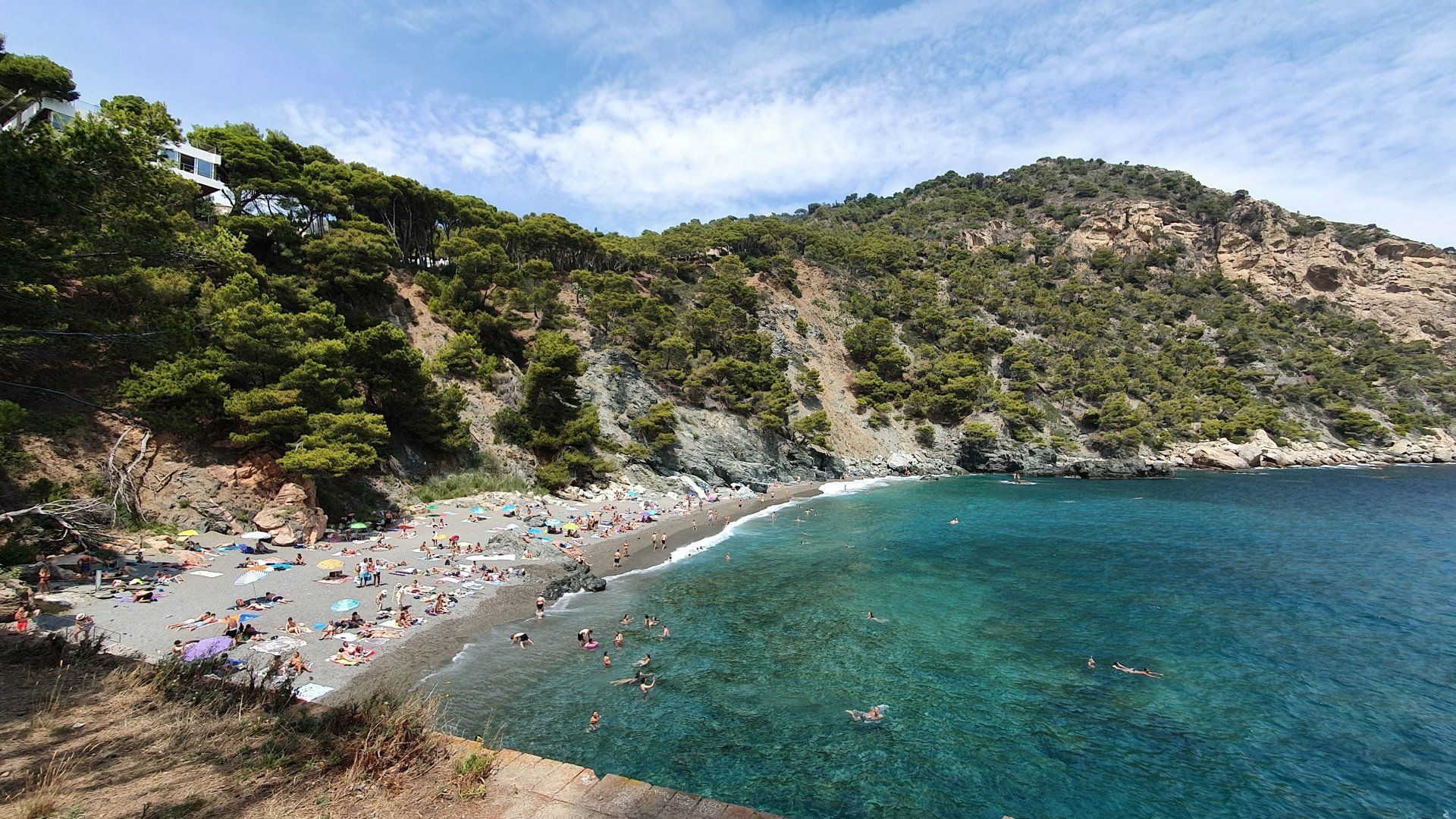The Camí de Ronda is a historical coastal route along Spain’s Costa Brava, originally established for patrolling the coast against smugglers and pirates. Stretching approximately 140 starting from and arriving to Girona, it offers stunning views of the Mediterranean, hidden coves, and charming seaside towns. Understanding the route’s length and practical details, such as available accommodations, weather conditions, and difficulty levels, is crucial for travelers planning their Camí de Ronda hike. Join the WAW.Walkers in enjoying the rich history, natural beauty, and cultural heritage that the Camí de Ronda has to offer!
What is the Camí de Ronda?
The Costa Brava, traversed by the Camí de Ronda, is culturally significant for its blend of history, art, and traditions. Renowned for its connection to Salvador Dalí, the region boasts charming locations like Llagostera, Palamós and Begur, showcasing Catalonia‘s architectural heritage. At the same time, the landscapes along the Camí de Ronda hike vary from rugged cliffs and secluded coves to pine forests and rolling hills, while the route offers glimpses into the local fishing traditions and maritime culture, with picturesque beaches and vibrant coastal towns enhancing the allure of this historically rich and naturally beautiful area.
How long is the Camí de Ronda?
The Camí de Ronda hike stretches approximately 140 kilometers, offering hikers a dynamic and engaging journey along Spain’s Costa Brava. This historical route has been adapted over the years, providing various sections and variations that cater to different hiking preferences.
DAY 1: Girona to Llagostera – approximately 28.7 km
The journey begins in Girona, a city rich in medieval architecture and vibrant cultural history. The 28.7 km trek to Llagostera transitions hikers from the bustling urban landscape to the quiet charm of rural Catalonia. Along the way, you’ll pass through verdant fields, ancient farmhouses, and small villages, showcasing the region’s agricultural heritage and diverse natural beauty. The gradual shift from city to countryside sets the tone for the varied landscapes that await on the Camí de Ronda.
DAY 2: Llagostera to St. Feliu de Guíxols – approximately 20.7 km
This 20.7 km segment leads hikers from Llagostera to the Mediterranean coastline at St. Feliu de Guíxols. As you descend from the inland hills, the landscape opens up, offering glimpses of the shimmering sea. Arriving in St. Feliu, you’re greeted by a lively coastal town with a rich maritime history, sandy beaches, and a welcoming harbor. Here, the Mediterranean Sea comes fully into view, marking the beginning of the coastal portions of the journey.
DAY 3: St. Feliu de Guíxols to Palamós – approximately 16.7 km
This 16.7 km stage from St. Feliu to Palamós takes you along scenic coastal paths that wind through rocky cliffs and sandy bays. The trail reveals maritime charm, as you pass through coves and small fishing villages that showcase the area’s rich seafaring traditions. Palamós, a town known for its fishing industry and delicious seafood, awaits at the end of the day, providing the perfect setting for a restful evening by the sea.
DAY 4: Palamós to Llafranc – approximately 14.3 km
As you embark on the 14.3 km route from Palamós to Llafranc, the trail follows the rugged coastline, offering views of secluded beaches, turquoise waters, and hidden coves. This scenic section is perfect for those wishing to pause, dip their toes in the Mediterranean, or enjoy a seaside picnic. Upon reaching Llafranc, you’ll find a charming coastal village that is a favorite among locals and travelers alike for its beauty and relaxed ambiance.

DAY 5: Llafranc to Begur – approximately 14.1 km
This 14.1 km trek from Llafranc to Begur brings a delightful mix of coastal paths and forested hillsides. The route ascends into higher terrain, offering panoramic views over the coast and the sparkling sea below. Known for its medieval castle and stunning viewpoints, Begur is a highlight of the Camí de Ronda, providing a rewarding stop with its blend of history, natural beauty, and unique architecture.
DAY 6: Begur to La Bisbal d’Empordà – approximately 18.4 km
Leaving the coast behind, this 18.4 km segment travels inland from Begur to the cultural town of La Bisbal d’Empordà. The trail meanders through picturesque countryside and traditional Catalan villages, immersing you in the Empordà’s rural charm. La Bisbal, famed for its pottery and artisan shops, invites exploration of its historic streets and provides a taste of the region’s artisanal traditions.
DAY 7: La Bisbal d’Empordà to Els Àngels – approximately 15.8 km
This 15.8 km segment takes you further into the countryside, journeying from La Bisbal to the peaceful sanctuary of Els Àngels. Known for its serene monastery and panoramic vistas, Els Àngels offers a retreat-like atmosphere that invites reflection and relaxation. For those with extra energy, an additional stretch can lead you closer to Girona, bringing your journey toward its final destination.
DAY 8: Els Àngels to Girona – approximately 14.4 km
The final 14.4 km hike brings you back to Girona, completing the Camí de Ronda. This last stretch is characterized by lush Mediterranean forests, rolling hills, and scenic viewpoints, gradually transitioning from wilderness to the lively streets of Girona. Ending in this historic city allows you to celebrate the journey in a setting that captures the blend of tradition, culture, and nature that defines the Camí de Ronda.
If you are seeking a shorter route, the Lineal option of the Camí de Ronda hike is ideal. This 43-kilometer trek is designed for those who regularly hike and have just two or three days available. It can be completed over a weekend or on selected dates, partially on the same route as the above detailed Circular route of the Camí de Ronda. The first day covers 17.4 kilometers, while the second day stretches for 25.6 kilometers – which can also be done in three days if you wish. On the first day, you are walking from St. Feliu de Guíxols to Palamós, and on the second day, you can enjoy the stunning areas between Palamós and Begur.

Camí de Ronda Key Points of Interest and Major Stops
Starting in Girona, a city renowned for its medieval architecture, visitors can explore the Girona Cathedral and the ancient city walls. As the Camí de Ronda hike winds towards Llagostera, hikers pass through the serene Sant Daniel Valley and the historic Sant Daniel Monastery.
In St. Feliu de Guíxols, make sure to visít the Monastery of Sant Feliu and the bustling market. Continuing to Palamós, don’t miss the Fishing Museum, which offers insights into the region’s maritime heritage. As you approach Llafranc, the Jardins de Cap Roig and the picturesque coves of Cala Estreta and Cala Cap de Planes are must-see natural points of interest.
Reaching Begur, the medieval Begur Castle provides panoramic views of the Costa Brava. The Camí de Ronda hike then leads to La Bisbal d’Empordà, famous for its ceramic art and the historic Castell Palau de la Bisbal. Finally, the trail circles back to Girona, completing the journey.

Planning Your Camí de Ronda Journey
When planning your stages along the Camí de Ronda, we’re here to ensure every step of your journey is seamless and memorable. Whether you’re drawn to the serene coastal paths or the rugged cliffs overlooking the Mediterranean, our team at WAW is dedicated to crafting an unforgettable experience. From booking charming accommodations in hotels and guesthouses to arranging hassle-free luggage transfers and providing expert consultations, we’ve got you covered.
Tips for Planning Your Journey:
- Daily Distance: Consider how far you want to hike each day. The Camí de Ronda route offers flexible stages, allowing you to tailor your journey to your fitness level and interests.
- Types of Terrain: Be prepared for a variety of terrains, including coastal paths, forest trails, and occasional urban sections. The diverse landscapes provide a mix of physical challenges and scenic rewards.
- Physical Challenges: Expect some sections to be more demanding, with steep climbs and rocky paths. Training and good physical condition will enhance your experience.
- Weather Conditions: The Costa Brava enjoys mild, pleasant weather, making it an ideal year-round destination. However, always check the weather forecast and pack accordingly.
The Camí de Ronda hike is not only a journey through diverse and breathtaking landscapes but also a cultural exploration of the Costa Brava region. With mild, pleasant weather, especially during the winter months, it’s an ideal destination for year-round hiking adventures. Interested? Reach out to us at [email protected]!
How long is the Camí de Ronda trail?
The Camí de Ronda stretches for about 140 kilometers along Spain’s Costa Brava, forming a circular route that starts and ends in Girona. There’s also a shorter linear version of around 43 kilometers, perfect for a two- or three-day hike between St. Feliu de Guíxols and Begur.
What is the best section of the Camino de Ronda?
The most beautiful section for many hikers is the stretch between Calella de Palafrugell, Llafranc, and Begur. It offers crystal-clear waters, dramatic cliffs, and charming fishing towns. This part can easily be done as a day hike or a short weekend trip.
Is the Camí de Ronda well marked?
Yes — most sections of the Camí de Ronda are clearly signposted with red-and-white GR-92 trail markers. However, some inland stretches and urban crossings can be confusing. Having a GPS track or a printed map helps avoid missing turns, especially near cliffs or forest transitions.



Comment (0)